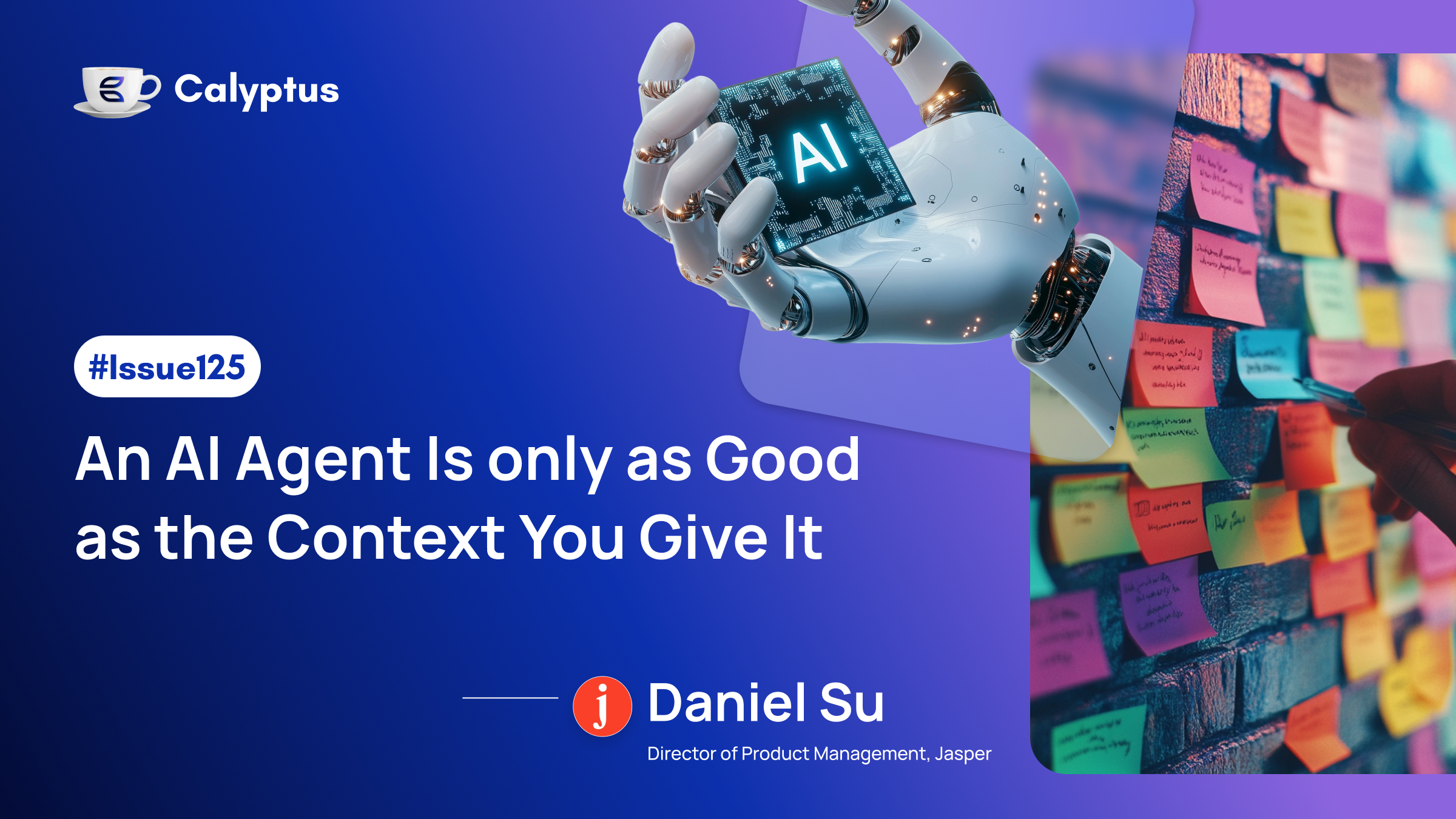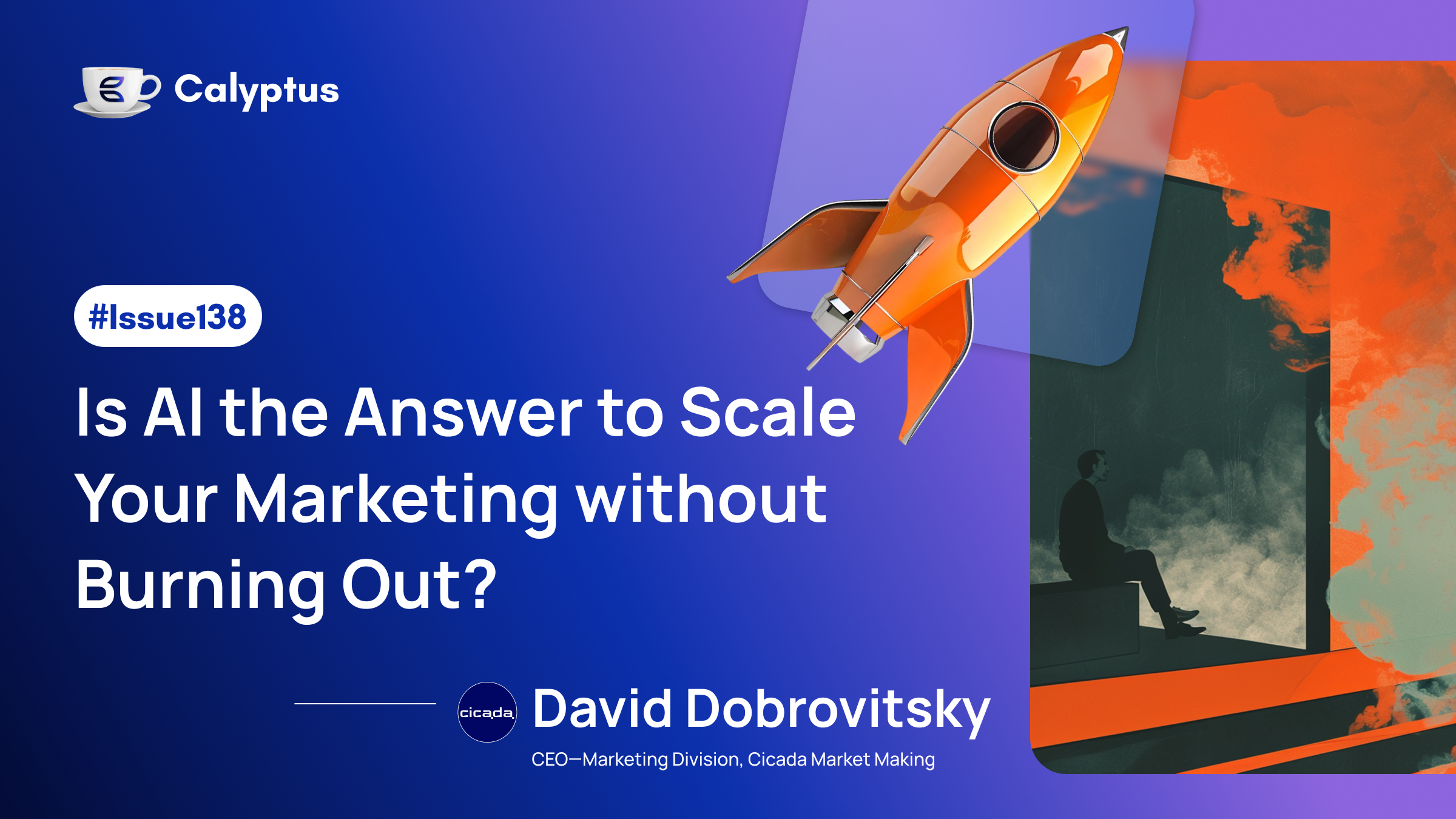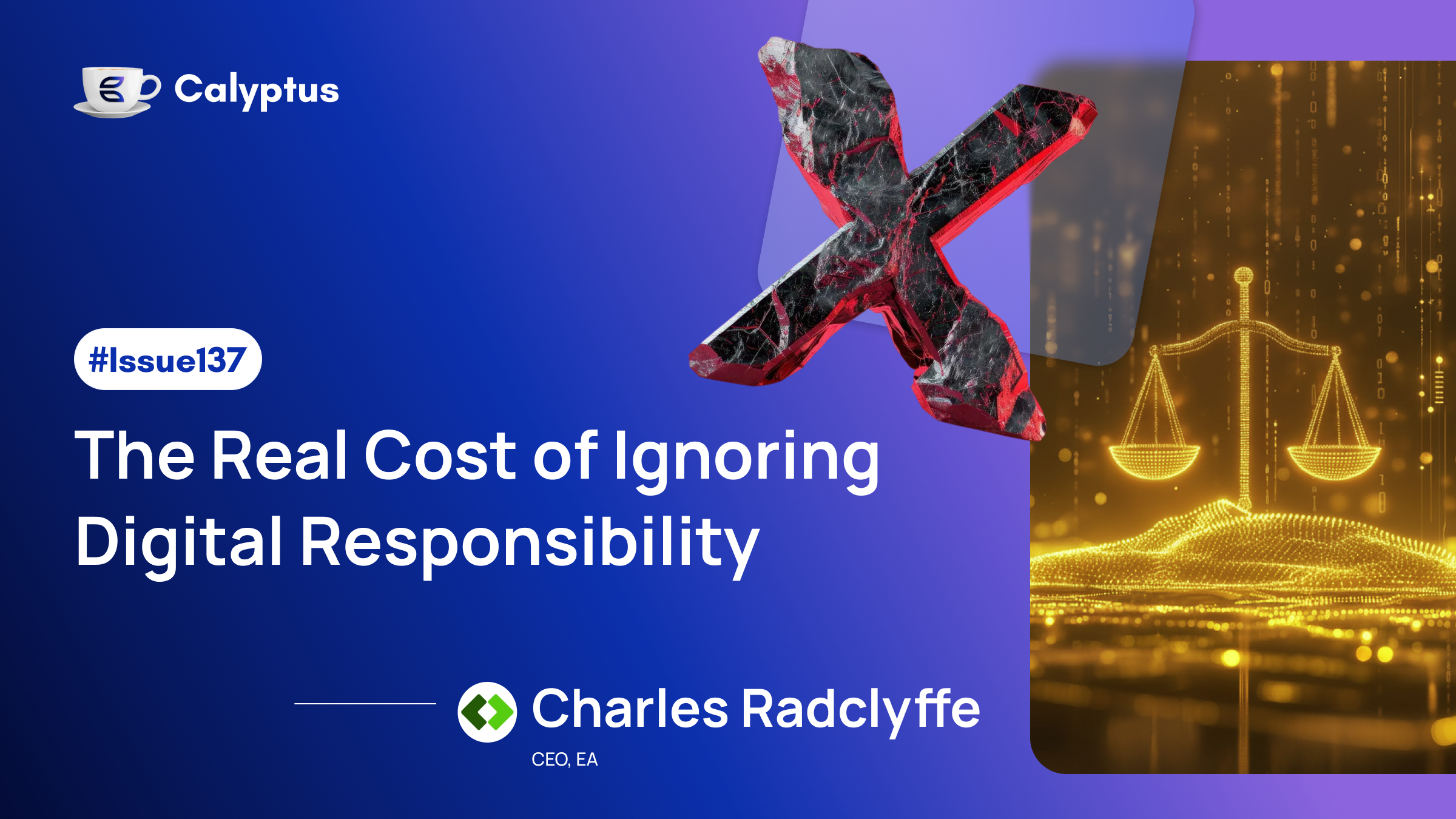In this edition of Coffee with Calyptus, we sit down with Daniel Su, Director of Product at Jasper, whose journey from gaming and advertising to AI and automation offers a masterclass in building human-centered technology. Daniel shares how his experiences managing products for hundreds of millions of users shaped his approach to designing ethical, context-aware AI systems.

Your journey from gaming and advertising to AI and automation is fascinating. What personal experiences or challenges shaped your approach to product management in the AI space?
I have been extremely fortunate to build products across these industries and each step taught me something essential. In gaming and advertising, I managed platforms serving hundreds of millions of users, which meant learning to personalize experiences at scale without losing user trust. That experience ingrained in me a user-first mindset that carries directly into AI. If your product doesn't deliver genuine value to the person on the other side, it won't last. I also learned to balance experimentation and ethics, something that's incredibly relevant to today's generative AI world. In gaming, one misaligned incentive or opaque algorithm could alienate millions overnight. In AI, the same principle applies if we let automation overstep human intention. Those lessons built my conviction that AI should enhance human creativity, not replace it.
When I transitioned into the AI space, I carried those lessons forward. At Dropbox, I led AI-driven document workflows. That reinforced for me how automation can free people from repetitive work while keeping human judgment at the center. Today at Jasper, those principles guide everything we build, from Jasper Studio, which helps marketers design AI workflows without writing code, to Agents that execute tasks autonomously but remain guided by humans. In many ways, my journey through gaming and advertising laid the foundation for my current work. Both spaces taught me to design systems that understand people, scale intelligently, and respect context. In AI, that translates to building systems that don't just "generate", but think in service of human intent.
You've led transformative projects at top tech companies. How do you think AI is reshaping marketing operations, and where do you see it heading in the next few years?
AI is dramatically reshaping marketing operations by taking on the heavy lifting and freeing humans to focus on high-value work. We're already seeing marketing teams use AI to generate content drafts, analyze data, and even personalize customer outreach at a scale that just wasn't feasible before.
I've witnessed this first-hand where tasks that used to take days of manual effort can now be done in minutes with the right AI tool. For example, at Jasper we built an Optimization Agent that autonomously handles SEO research and content optimization. It can identify relevant keyword gaps, track competitors, and produce production ready SEO-optimized assets in real time. We're also launching a Personalization Agent that adapts marketing messages to different customer segments in your brand voice without you even having to prompt it.
These kinds of AI agents illustrate how operations are evolving. Routine marketing tasks are becoming increasingly automated and intelligent. Marketers are moving from doing the grunt work to orchestrating and guiding it, which means they can run more campaigns, across more channels, with far less manual effort.
Looking ahead a few years, I see AI becoming an even more integral collaborator in marketing, almost like an ever-present partner on the team. We're quickly moving from an era of us prompting AI to one where AI starts prompting us. In practical terms, that means AI will increasingly anticipate needs, surface insights, and suggest strategic next steps before we even ask. I expect marketing workflows will turn into fluid, continuous content pipelines where the traditional gap between planning and execution disappears. AI will likely handle multi-modal content creation (text, images, maybe video) in a coordinated way and dynamically personalize customer journeys at scale. Most importantly, all this will and must happen with robust brand guardrails, so consistency and compliance are maintained even as speed accelerates.
Marketing will be a huge part of that story. I believe the winners will be the teams that fully embrace AI as a core part of their operations, using it not just for one-off tasks but embedding it across their campaign workflows. AI won't replace the creative and strategic roles in marketing but it will profoundly augment them, allowing marketing teams to scale their impact in ways that once seemed unimaginable.
In your work with autonomous agents and generative workflows, what's been the most surprising learning curve, and how did you overcome it?
One of the most surprising learning curves in building AI agents was realizing how much context and coordination they require. We often imagine an "autonomous agent" as this all knowing helper but in practice an agent is only as good as the guidance and memory you give it.
We overcame this in a few different ways. One is within the robust guardrails and shared context of Jasper IQ. Jasper IQ supports a central context and memory layer that all our agents reference to stay on-brand and on-task. Rather than letting each agent operate in a vacuum, we ensure they're always aware of the brand guidelines, campaign specifics, and each other's outputs.
We also kept our agents' scope focused. Each one has a well-defined job so they don't step on each other's toes. The result today is a far more reliable multi-agent workflow. The big takeaway for me was that developing generative workflows isn't just about the AI's capabilities, it's about system design and governance. Once we invested in those areas (memory, context-sharing, alignment checks), the agents started delivering consistent, quality results. It's rewarding to see them handle complex tasks in a way that feels like second nature now, knowing the effort we put in to get that orchestration right.
As an instructor of Agentic AI, what's the most common misconception students have about building multi-agent systems, and how do you help them rethink it?
The most common misconception I encounter is that more powerful models automatically mean better outcomes. In reality, coordination and specialization matter far more than raw horsepower. It's like managing a team, you wouldn't assign five people to the same task without defining roles or context. In practice, the best results come from using the right model for the right job.
If you take marketing as an example, Claude might excel at long-form narrative content while GPT-4 or Gemini might outperform in generating campaign ideas or taglines. Each has its strengths and quirks. At Jasper, we've built around that philosophy. Our agentic platform is LLM-agnostic, meaning we dynamically use different models depending on the task, audience, and use case.
We do ongoing qualitative and quantitative evaluation to understand which models perform best for specific marketing tasks, like SEO research, rewriting, or campaign personalization. We also benchmark new models as they're released and fine-tune prompt and retrieval strategies based on the results. This approach keeps us agile as the AI ecosystem evolves. We're not betting on a single model but building an architecture that can adapt to the best available intelligence for each job.
It's a lot like building a multi-agent system itself where success doesn't come from stacking power but from orchestrating diversity effectively. That's what I try to teach and what we practice daily at Jasper.
With AI rapidly evolving, how are you integrating AI tools into your own product development process at Jasper, and what has that journey taught you about the future of AI in marketing?
At Jasper, we don't just build AI tools for others. We use them ourselves every day in our product development process. We like to "dogfood" our own platform, meaning our team uses Jasper to accelerate our own work. For example, when we brainstorm new product ideas or kickoff a campaign, we often hop into a Canvas, which is amazing for rapidly generating variations of a concept or exploring a space we might not have thought of. We've even built internal workflows using Jasper Studio to automate some of our routine tasks, like summarizing user feedback or creating PRDs based on common user requests.
This integration of AI into our daily workflow has definitely made us faster and more innovative. It's almost like each member of the team has an AI research assistant or editor alongside them. We still rely on human creativity and judgment for the final call but having AI in the loop at every stage has upped our game. It also allows us to become end users of our own product and polish the user experience. For me, I know if something frustrates us internally, we know it'd frustrate customers too. It's created a culture where experimentation with AI is encouraged. Anyone on the team can spin up a prototype, which means more ideas get tested quickly. That has definitely made our product development more agile and creative.
This journey of deeply integrating AI into how we work has taught me a lot about the future of AI in marketing. The biggest lesson is that AI is a force multiplier when used correctly. It can dramatically increase the scale and efficiency of what a team can do but it doesn't replace the need for human strategy and imagination. In marketing specifically, I foresee it becoming an invisible but powerful engine behind the scenes of every campaign. Our experience also underscored the importance of domain-specific context. The more we trained our AI on marketing-specific knowledge, company brand voice, customized audiences, the better it performed. This hints that the future isn't about one size fits all AI but rather tailored AI systems embedded in a company's workflow.
Marketers will work with AI as a strategic partner. Jasper might generate a hundred campaign variants or crunch performance data across channels, but the marketer will curate and guide the strategy. This aligns with what we're seeing across the industry. AI, when integrated deeply, amplifies human creativity and impact. It can accelerate ideation, enable content pipelines at scale, and still stay on-brand with the right guardrails, effectively acting as a multiplier on what marketing teams can deliver.
The future of AI in marketing will belong to those who reimagine their workflows around these intelligent capabilities. It's not about doing the same marketing tasks faster. It's about redefining the tasks altogether. I can confidently foresee a near future where marketers get to focus more on strategy, storytelling, and big creative ideas, while AI takes care of the rest. That's an exciting and empowering future for all of us in the field.
We hope you enjoyed this edition of Coffee with Calyptus. Stay curious, stay inspired, and keep building what matters. Explore more editions and insightful articles at https://www.calyptus.co/blog.



This email has been sent to you, because you are a customer or subscriber of Calyptus LTD. Unsubscribe




